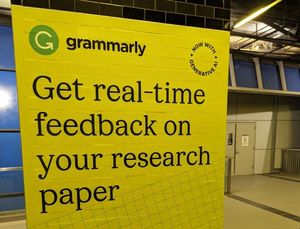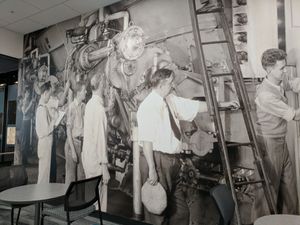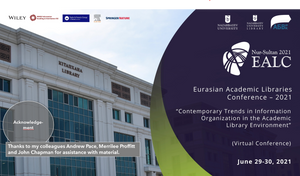I have wondered elsewhere in these pages what issues would one face if one tried to build out library services on top only of general web-based tools (bookmarklets, extensions, toolbars, …) and services (Flickr, Del.icio.us, Google, …). I proposed it as an interesting thought experiment, in light of the need to get into our users’ webflow.
A couple of unrelated things have come over my horizon which relate to this.
The first is a description of the project to collectively capture memories of the Gates art-work by Christo and Jeanne-Claude in Central Park.
We decided to see if we could build an archive, then edit and shape it using existing software. We accomplished the first part of this quite handily, gathering over 3,000 images through the Flickr network, 75 story links on our del.icio.us page, and 50 blog posts with 27 comments. But as we moved into the next phase of our project, editing the assembled archives, we quickly discovered limitations inherent in the software, which does not allow community participation in the organization of content. Programs like Flickr, created primarily as collection, storage, and sharing facilitators, do not set up useful editorial structures for understanding an archive. The problem of how to get the collective to find meaning in the collection is the focus of this paper which describes: our experience building a collective memory archive with social software; the limitations we came up against when we began the editorial process; questions the project raised about the role of the editor in a networked environment; and how social software might be modified to enhance the editorial process. [Sorting the Pile: Making Sense of A Networked Archive | Kairosnews]
In this paper there is some interesting discussion about whether to do custom work to create desirable functionality on top of the Flickr platform, about the nature of collective creation, about the book as a network service, and about memory in the evolving web. See the blog entries collected at The Gates: an Experiment in Collective Memory for more details of the project.
The second is a note about CourseCafe I came across on TechCrunch. Essentially, provides some pre-assembly of a range of web tools for search, bookmarking, annotation and commentary, as well as collaborative working. I have no experience of this product, and no sense of what traction it will achieve, but I thought the description interesting as indicative of a trend. It seems to have been developed outside the formally constituted standards and architectural work within the e-learning community – IMS, Sakai, … – and to adapt more generic emerging web-based approaches. I will be interested to follow its progress.
Each of these cases is about building specific value with emerging, collaborative, generally available web tools.
Gates on Kairosnews link via Eric Childress.
Techcrunch is a good place to keep track of Web 2.0 startups – many of whom, presumably, hope to build something attractive enough for somebody to buy.
Related entry:



